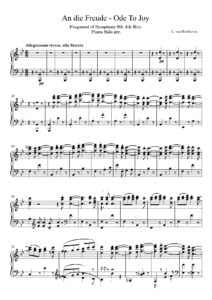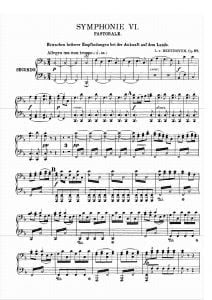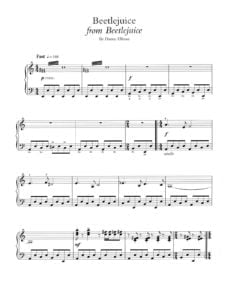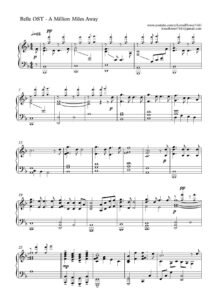Table of Contents
Astor Piazzolla – Oblivion (piano solo ver.) has been added to our sheet music Library.

Browse in the Library:
| Artist or Composer / Score name | Cover | List of Contents |
|---|---|---|
| Beethoven – Fur Elise | Beethoven – Fur Elise | |
| Beethoven – Moonlight Sonata | ||
| Beethoven – Moonlight Sonata 1st Mov. Guitar arr. with TABs |
 |
|
| Beethoven – Moonlight Sonata 1st Mov. Guitar arr. with TABs.mscz | ||
| Beethoven – Ode to joy – Piano arr. | Beethoven – Ode to joy – Piano arr. | |
| Beethoven – Ode To Joy (Piano solo arr.) |
 |
|
| Beethoven – Piano concerto 4 (Theme Easy piano solo) |
 |
|
| Beethoven – Piano Concerto 4 (Theme Easy Piano Solo) (Musescore File).mscz | ||
| Beethoven – Piano Concerto No 4 in G Op 58 (arr. for 2 pianos) | Beethoven – Piano Concerto No 4 | |
| Beethoven – Sonata No 23 Op 57 (Appassionata) Piano Solo (Musescore File).mscz | ||
| Beethoven – Sonata No. 8 Op. 13 Pathétique (Musescore File).mscz | ||
| Beethoven – Sonata Pathétique arr. for Guitar (Piano Sonata no. 8 in C minor op. 13 ) | Beethoven – Sonata Pathétique arr. for Guitar (Piano Sonata no. 8 in C minor op. 13 ) | |
| Beethoven – Sonata Pathétique arr. for Guitar (Piano Sonata no. 8 in C minor op. 13 ).mscz | ||
| Beethoven – Sonate Op 111 – Arietta (Liszt) |
 |
|
| Beethoven – Symphony n. 9 D 2H Pauer |
 |
|
| Beethoven – Symphony No. 5 (1st movement) Piano solo arr. |
 |
|
| Beethoven – Symphony No. 7 2nd Movement Piano Solo Arr. | Beethoven – Symphony No. 7 2nd Movement Piano Solo Arr. | |
| Beethoven – Symphony No. 9 3rd movement arr. for piano solo by Ernst Pauer | Beethoven – Symphony No. 9 3rd movement arr. for piano solo by Ernst Pauer | |
| Beethoven 2 cadenzas from Piano Concerto n 4 op 58 (arr. piano solo by Beethoven) | Beethoven 2 cadenzas from Piano Concerto n 4 | |
| BEETHOVEN ADAGIO from Piano Concerto Eb arr. piano solo |
 |
|
| Beethoven Analyse Pathetique | Beethoven Analyse Pathetique | |
| Beethoven by George Alexander Fischer (1905) Book |
 |
|
| Beethoven Duo For 2 Flutes Woo 26 (Musescore File).mscz | ||
| Beethoven Egmont Ouverture Piano solo Arr. Henselt |
 |
|
| Beethoven Egmont Overture Opus 84 Piano Solo arr. sheet music | Egmont Overture Opus 84 Beethoven 1st page | |
| Beethoven Fantasia G Minor Op.77 |
 |
|
| Beethoven Fingerpicking For Guitar Solo with TABs |
 |
Beethoven Fingerpicking For Guitar Solo with TABs |
| Beethoven His Spiritual Development by J.W.N. Sullivan (Book) 1936 |
 |
|
| Beethoven L.V. Op 68 SYMPHONY VI arr. for 2 pianos |
 |
|
| Beethoven Leonore Overture No. 3 Piano Solo |
 |
|
| Beethoven Leonore Overture No. 3 Piano Solo Musescore File.mscz | ||
| Beethoven Liszt 5th Symphony Piano Solo arr (Complete) |
 |
|
| Beethoven Liszt 5th Symphony Piano Solo arr.mscz | ||
| Beethoven Liszt – Symphony no. 9, 4th Movement Piano Solo arr. |
 |
|
| Beethoven Liszt – Symphony No.9 4th Movement (Musescore File).mscz | ||
| Beethoven Liszt Marche Funebre |
 |
|
| Beethoven Liszt Symphony No. 9 – 1st Movement (S. 464) Piano Solo arr. | Beethoven_Liszt Symphony No. 9 – 1st Movement (S. 464) – Franz Liszt | |
| Beethoven Liszt Symphony No. 9 – 2nd Movement (S. 464) Piano Solo arr. | Beethoven_Liszt Symphony No. 9 – 2nd Movement (S. 464) – Franz Liszt | |
| Beethoven Moonlight Sonata 3rd Movement Guitar Tabs arr. | Beethoven Moonlight Sonata 3rd Movement Guitar Tabs arr. cover | |
| Beethoven Pastoral Symphony (piano reduction) | Beethoven Pastoral Symphony (piano reduction) | |
| Beethoven Piano Book 10 Musical selections (easy piano) |
 |
Beethoven Piano Book 10 Musical selections |
| Beethoven Piano Concerto 5 Piano Solo Reduction |
 |
|
| Beethoven Piano Concerto No 4 1st Movement (Arr For 2 Pianos) (Musescore File).mscz | ||
| Beethoven Piano Concerto No 4 3rd Mvmt (Arr For 2 Pianos) (Musescore File).mscz | ||
| Beethoven Piano Concerto No 4 Op 58 Piano Solo Reduction |
 |
|
| Beethoven Piano Concerto No 5 (1st Movement) Arr For 2 Pianos (Musescore File).mscz | ||
| Beethoven Piano Concerto No 5 2nd Movement Fragment (Piano Solo) (Musescore File).mscz | ||
| Beethoven Piano Concerto No. 4 1st Movement Arr. For 2 Pianos.mscz | ||
| Beethoven Piano Concerto No. 4 3rd Movement Arr. For 2 Pianos.mscz | ||
| Beethoven Piano Sonata No.17 “tempest” 1st Movt. (Musescore File).mscz | ||
| Beethoven Sonata Op 49 No 2 (Musescore File).mscz | ||
| Beethoven Sonate No 8 “pathétique” Op. 13 1st Movement (Musescore File).mscz | ||
| Beethoven Symphony n.6 F 2H Pauer | ||
| Beethoven Symphony No 5 (1st Movement) Piano Solo (Musescore File).mscz | ||
| Beethoven Symphony No 6 Pastoral (1st Movement) Piano Solo (Musescore File).mscz | ||
| Beethoven Symphony No 6 Pastoral (3rd Movement) Piano Solo (Musescore File).mscz | ||
| Beethoven Symphony No 6 Pastoral (4th Movement) Piano Solo (Musescore File).mscz | ||
| Beethoven Symphony No 6 Pastoral (5th Movement) Piano Solo(1) (Musescore File).mscz | ||
| Beethoven Symphony No 7 (2nd Movement) Piano Solo (Musescore File).mscz | ||
| Beethoven Symphony No 9 (1st Movement) Piano Solo (Musescore File).mscz | ||
| Beethoven Symphony No 9 (2nd Movement-Scherzo) Piano Solo (Musescore File).mscz | ||
| Beethoven Symphony No. 5 (1st Movement) Piano Solo (Musescore File).mscz | ||
| Beethoven Symphony No. 6 Pastoral (2nd Movement) Piano Solo (Musescore File).mscz | ||
| Beethoven Symphony No. 6 Pastoral 2nd Movement (Musescore File).mscz | ||
| Beethoven Symphony No. 7 2nd Movement Piano Solo Arr. (Musescore File).mscz | ||
| Beethoven Symphony No.6 Op.68 piano solo arr. by Liszt |
 |
|
| BEETHOVEN The Complete Variations For Piano Solo |
 |
BEETHOVEN The Complete Variations For Piano Solo_compressed |
| Beethoven Variations and Fugue in E-flat major (Eroica Variations) Op. 35.mscz | ||
| Beethoven Virus Jazz |
 |
|
| Beethoven_Liszt Symphony No. 9 – 1st Movement (S. 464) – Franz Liszt Piano Solo arr.mscz | ||
| Beethoven_Liszt Symphony No. 9 – 2nd Movement (S. 464) – Franz Liszt Piano Solo arr.mscz | ||
| Beethoven_Symphony_No._9_3rd_movement_for_piano_solo.mscz | ||
| Beethoven- Liszt Symphony no. 6 Pastorale piano solo arr. |
 |
|
| Beethoven-Liszt Symphony 9 Choral (arr. for piano) |
 |
|
| Beethoven-Ludwig-van – Sonaten alle complete Band 1 (1-15) |
 |
|
| Beethoven-Ludwig-Van – Sonaten Alle Complete Band 2 (16-32) |
 |
|
| Beethoven-Moszkowski – Emperor piano solo Transcription |
 |
|
| Beethoven’s 32 Piano Sonatas A Handbook For Performers (BOOK) |
 |
|
| Beethoven’s Arrangements For Solo Piano Of The 9 Symphonies By E. Pauer |
 |
|
| Beethoven’s Last Piano Sonatas, Piano Sonata In A Major, Op. 101 An Edition With Elucidation, Volume 4 |
 |
|
| Beethoven’s Last Piano Sonatas, Piano Sonata In E Major, Op. 109 An Edition With Elucidation, Volume 1 |
 |
|
| Beetlejuice – Obituaries – Danny Elfman | Beetlejuice – Obituaries – Danny Elfman | |
| Beetlejuice Theme – Danny Elfman |
 |
|
| Beetoven – Klaviersonate Nr. 14 Mondscheinsonate (Piano Sonata No. 14 Moonlight) 3rd Mov. (Musescore File).mscz | ||
| Beginning Gospel For Piano Easy Piano |
 |
Beginning Gospel For Piano Easy Piano |
| Beginning Jazz Guitar The Complete Jazz Guitar Method by Jody Fisher (with audio MP3 audio tracks and Tablature) |
 |
Beginning Jazz Guitar |
| Beginning Solo Guitar Merry Christmas with Tablature |
 |
Beginning Solo Guitar Merry Christmas |
| Béla Bartók Romanian Folk Dances Sz. 56 Piano Solo Sheet Music |
 |
|
| Bela Bartok – Music For Strings, Percussion And Celesta Sz. 106 (Piano Transcription) | Bela Bartok – Music For Strings, Percussion And Celesta Sz. 106 (Piano Transcription) | |
| Béla Bartók An Analysis Of His Music (Book) By Ernö Lendvai |
 |
|
| Bella Ciao – As Performed In La Casa De Papel (Traditional Italian Anti-Fascist Song) (Musescore File).mscz | ||
| Bella Ciao (As performed in La Casa de Papel – Money Heist) Traditional Italian song (Anti-fascist) | Bella Ciao | |
| Bella Ciao Ukulele with Tablature TABs | Bella Ciao Ukulele with Tablature TABs | |
| Bella gioventù (Renato Zero) | ||
| Bella’s Lullaby (Carter Burwell) | ||
| Belle OST – A Million Miles Away by Rachel Portman |
 |
|
| Bellini Casta Diva (piano) | Bellini-CastaDiva | |
| Bellini – Casta diva (Norma) Easy Piano Solo arr. |
 |
|
| Bellini – Casta Diva (Norma) Easy Piano Solo Arr. (Musescore File).mscz | ||
| Bellini – Norma Casta Diva arr. piano solo |
 |
|
| Beltrami, Marco – The Giver – Rosemary’s Piano |
 |
|
| Ben (Michael Jackson) | ||
| Ben E King – Stand By Me | ||
| Ben Folds – Annie Waits | ||
| Ben Folds – Brick | ||
| Ben Folds – Carrying Cathy | ||
| Ben Folds – Effington (Solo) |
 |
|
| Ben Folds – Fired | ||
| Ben Folds – Gone | ||
| Ben Folds – Losing Lisa | ||
| Ben Folds – Not The Same | ||
| Ben Folds – Rockin The Suburbs | ||
| Ben Folds – Still Fighting It | ||
| Ben Folds – The Luckiest | ||
| Ben Folds – Zak And Sara | ||
| Ben Harper – Fight For Your Mind (Songbook) (Ben Harper) Guitar TABs |
 |
Ben Harper – Fight For Your Mind (Songbook) (Ben Harper) Guitar TABs |
| Ben Webster – Better Go The Quintet Studio Sessions |
 |
|
| Ben Webster – Solo on Solitude By Duke Ellington | Ben Webster – Solitude By Duke Ellington | |
| Ben Webster – Someone to Watch Over Me The Life and Music of Ben Webster (Jazz Perspectives) (Frank Buchmann-Moller) Book |
 |
|
| Ben Webster Stormy Weather – (solo Tenor Sax)I Cant Get Started | Ben Webster Stormy Weather – (solo Tenor Sax)I Cant Get Started |
Astor Piazzolla
“Music is the most direct art, it enters through the ear and goes to the heart.”
Born on March 11, 1921 in Mar del Plata, Buenos Aires province. He was a bandoneon player and composer.
His contact with music began in New York, where his family lived between 1925 and 1936. At the age of eight, his father gave him his first bandoneon , and he began to take classes with Andrés D’Aquila; he made a recording on acetate when he was only ten years old, without commercial purposes. In 1933, he studied music with the Hungarian pianist Bela Wilda, who introduced him to the sound universe of Bach.
The following year, he met Carlos Gardel and quickly became friendly with him. Gardel heard him play and offered him to participate and play several songs in the film El día que me quieras; in which he played a newsboy. He was also invited to the tour of America in which Gardel lost his life along with his team; but, given his young age, he did not travel because he did not have permission.
In 1936, his family returned to Mar del Plata, and Astor participated in various ensembles and became acquainted with the work of the Elvino Vardaro sextet, which influenced him definitively. Determined to explore tango, he moved to Buenos Aires at the age of seventeen and, shortly after, he achieved his goal: to join the Aníbal Troilo orchestra , first as a bandoneonist and occasional pianist and, later, as an arranger for the orchestra.
Please, subscribe to our Library.
If you are already a subscriber, please, check our NEW SCORES’ page every month for new sheet music. THANK YOU!
He continued his studies in academic music with Alberto Ginastera and, in piano, with Raúl Spivak. His arrangements distanced him more and more from classical tango. Around 1944, he left the Troilo Orchestra to direct the orchestra that accompanied the singer Francisco Fiorentino until 1946, when he composed El desbande, considered by himself his first tango with a different formal structure.
He formed his own orchestra, which he disbanded in 1949, and began writing music for films. He moved away from the bandoneon and approached jazz: the search for a different style led him to deepen his musical studies.
Between 1950 and 1954, he composed works clearly different from the conception of tango up to that time ( To show off , Tanguango , Prepare , Contrabajeando , Triunfal , What will come ), and began to define his style. Also at this time, he wrote pieces of music cultured, such as Rhapsody of Buenos Aires (1952) and Buenos Aires, three symphonic movements (1953). For the latter, he won the Fabien Sevitzky Prize, and the French Government awarded him a scholarship to study in Paris with the famous musical pedagogue Nadia Boulanger, who convinced him to continue on the path of tango:
«Astor, your scholarly works are fine written, but here is the real Piazzolla, never abandon him».
The fellowship lasted for almost a year, and in that time, he formed a string orchestra with Paris Opera musicians Martial Solal and Lalo Schifrin. With Schirfrin, he recorded Two Argentinians in Paris (1955).
Upon his return to Argentina, he summoned top-class musicians and formed the Octeto Buenos Aires. It was made up of Enrique Mario Francini and Hugo Baralis, on violins; Roberto Pansera, on bandoneon; José Bragato, on cello; Aldo Nicolini, on bass; Horacio Malvicino, on electric guitar, and Atilio Stampone, on piano.
Various versions of the Octet had a decisive influence on the future evolution of tango, due to their rhythmic and contrapuntal novelties.
Best Sheet Music download from our Library.
When his father died in 1959, he composed perhaps his most beautiful work in his tribute: Goodbye, Nonino . In 1960, after a stay in the United States, where his style was presented as jazz-tango, he formed a quintet that included musicians such as Elvio Bardaro, Dante Amicarelli, Antonio Agri, Horacio Malvicino, Oscar López Ruiz, Kicho Díaz, Osvaldo Manzi and Cacho Tirao.
In 1968, he composed, with the poet Horacio Ferrer, the opera María de Buenos Aires , for eleven instruments, female and male reciter and singers. In 1969, she began to write, also together with Ferrer, simpler songs for the voice of Amelita Baltar, her partner in those years.
They composed Balada para un loco , which became a great popular success that was followed by others. In 1972, after a heart attack, she decided to settle in Italy for five years. She formed the Conjunto Electronico, recorded Libertango and experienced her approach to jazz-rock. In 1974, she recorded Summit with saxophonist Gerry Mulligan; and, a year later, after the death of Aníbal Troilo, the album Suite Troileana . In 1976, she appeared at the Gran Rex theater with her play De ella 500 Motivaciones ; and, in 1977, with a series of concerts at the Olympia in Paris.
In 1978, she returned with her Quintet and consolidated her international fame with tours of Europe, South America, the United States and Japan. In 1983, at the Teatro Colón, he offered a program entirely composed by him.
In 1984, he performed with the singer Milva and produced the album Live at the Bouffes du Nord ; in Vienna, she recorded Live in Wien with the Quintet. In 1985, he was named an Illustrious Citizen of Buenos Aires ; and he premiered, in Belgium, at the Fifth International Guitar Festival, the Concert for Bandoneon and Guitar: Homage to Liège , conducted by Leo Brouwer.
In 1986, he received the César Award in Paris for the soundtrack of the film El exilio de Gardel ; and he recorded live, together with Gary Burton, Suite for Vibraphone and New Tango Quintet , at the Montreux jazz festival (Switzerland). In 1987, he presented himself with a massive recital in Central Park (New York). In 1988, he recorded his last album with the La Camorra Quintet. In 1989, he formed Sexteto Nuevo Tango, with which he performed at the Teatro Ópera, toured, and appeared as a soloist until its dissolution at the end of that year.
On August 4, 1990, in Paris, he suffered a cerebral thrombosis that left him bedridden. He died on July 4, 1992, in Buenos Aires.
